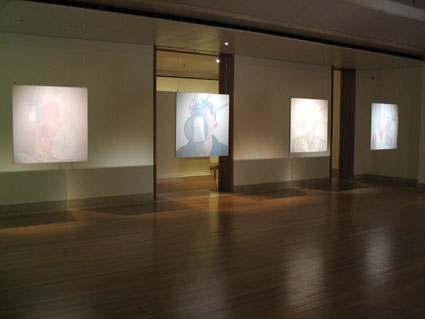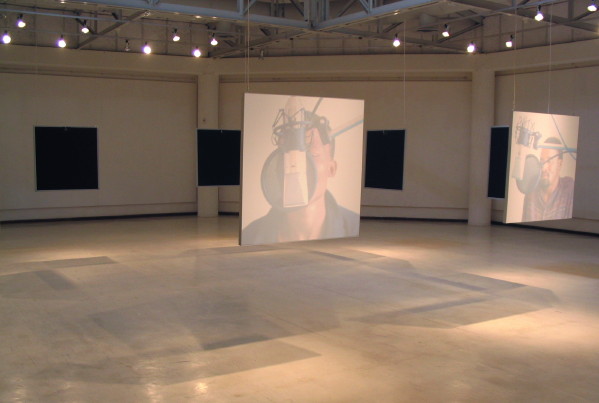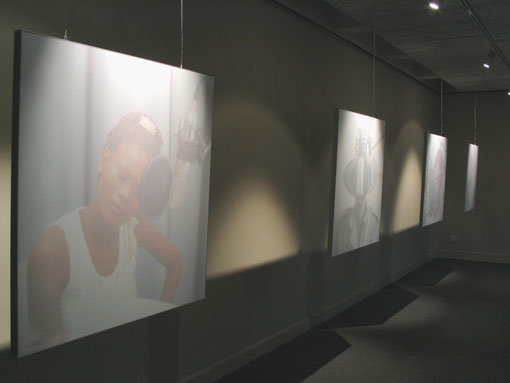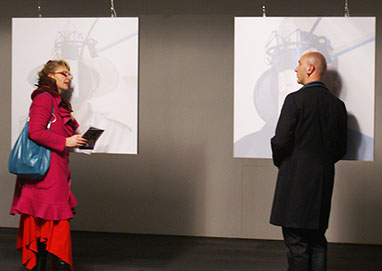 Brunei Gallery, SOAS, University of London, 2005 |
Sound
shifts around the room and each portrait, as in a fairy tale, takes
its turn at speaking to us. But Wynne underlines the fragility of these
languages by only giving occasional glimpses of actual words. The rest of the time we stand amidst a soundscape that he has created
from the voices' raw material: clicks are processed to generate
bell tones,
while vowels are massively extended into shimmering drones. The
result is an Ambient music, calm and beautiful, in which we have space
to think about the issues underlying the piece; but it's also a simmering,
ominous sound which conjures the desert itself.
Clive Bell The Wire magazine |
|
|
|
|
|
|
The
portraiture integrated into the playback system of this installation
counters the shift towards a detachment from human agency, yet also
engages with the mediating effects of recording technology. Faces
are obscured; voices are extended, or filtered, until their meaning
is abstracted. These faces, and voices, are both highlighted by
the wider world of digital communications, and with conscious irony,
absorbed by its power.
David
Toop
|
|
|
|


